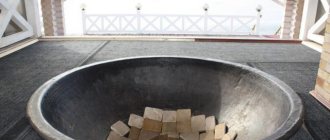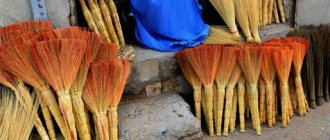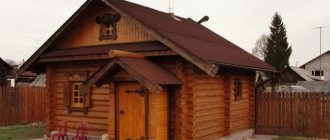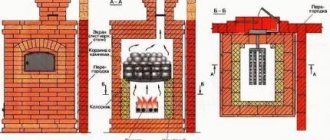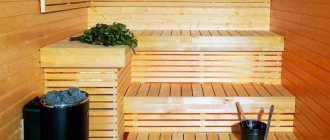A cinder block is a building product that is manufactured industrially or by handicraft. The production uses the method of vibration pressing of concrete in special forms.
Cinder block is one of the most popular building materials due to its low cost composition and low manufacturing cost.
What makes the product popular is the abundance of materials in the working solution—what the cinder block is made of.
Cinder block as a building material
Cinder block is a building material that contains slag, concrete mixture, cement, and other additives. The material is shaped like brick. Even inexperienced builders can make cinder blocks on their own.
If the volumes of cinder blocks produced are large, it is recommended to make a special machine, which is placed directly at the construction site. If you follow the steps for preparing the building material, and also strictly follow the recipe, you get a high-quality cinder block.
Scope of application
Cinder block is not intended for the construction of buildings higher than one floor. This material is used for the following types of buildings:
- garages;
- one-story residential buildings;
- sheds for keeping livestock;
- temporary buildings;
- country houses;
- workshops.
When building higher residential premises, for example, frame houses, this material is used as insulation.
It is not recommended to build multi-story buildings from cinder blocks due to the low load-bearing capacity of the material.
Buildings built from this material have advantages and disadvantages. Benefits include:
- low probability of fires;
- strength;
- efficiency;
- resistance to temperature changes;
- high speed and ease of construction;
- long service life;
- high rates of sound insulation;
- resistance to biological destruction.
Along with its advantages, the building material has a number of disadvantages. These include:
- toxicity;
- hygroscopicity, that is, high ability to absorb moisture;
- low thermal insulation, which is why buildings need additional insulation;
- difficulties when laying pipes in a cinder block building;
- problems when pulling cables in a building;
- unaesthetic appearance.
The characteristics listed above force builders to use more expensive building materials to insulate the building, insulate the walls from moisture and finish the walls on the outside.
The basis of the building material, slag, sometimes contains acids and sulfur, which are unfavorable to human health, so it is recommended to weather this material in the open air for a year.
Forms for filling blocks
To create a finished block, special molds are used into which the finished solution is poured. The molds are made of wooden material; rectangles are placed in the inside to create voids of the required size. You can attach plastic film to the inside of the mold, then the blocks will be easy to pull out and their surface will become smooth. The blocks are placed in an open space, and hardening is carried out at air temperature, without the use of additional heating. It will take almost a month to be completely ready, so you need to be patient.
Specifications
There are a number of technical characteristics of cinder blocks, depending on which they are divided into types. The building material is suitable for certain jobs, depending on its technical qualities.
Types of building material
There are several types of building material, depending on which it is used for certain purposes. Building materials are distinguished according to two parameters:
- degree of emptiness;
- thickness.
The table shows the types of cinder blocks according to the degree of voidness, their properties and recommended areas of application are given.
| Type of cinder block | properties | application area |
| full-bodied |
|
|
| hollow (degree of hollowness – 40%) |
|
|
| hollow (degree of hollowness – 25 – 40%) |
|
|
Depending on the standard dimensions, cinder blocks are divided into:
- wall (dimensions - 390 x 190 x 188 mm);
- partition (dimensions - 390 x 90 x 188 mm).
When asked whether it is necessary to adhere to standard sizes when producing materials independently, recommendations are given to maintain stable dimensions, that is, to produce cinder blocks of the same size.
Strength grades of cinder blocks
The strength of a building material is determined by coefficients from 10 to 125. The degree of strength is directly proportional to the increase in the coefficient - the higher the coefficient, the higher the degree of density and strength of the material.
The lowest density of cinder block is 750 kg/m3. The highest figure is 1450 kg/m3.
When constructing buildings that require communications, it is not recommended to use the strongest cinder block, since it cannot be cut or turned.
Composition of the mixture for the manufacture of building material
The basis of the composition for making cinder blocks is slag. It is a metallurgical waste product formed after the separation of metal components from ore. It is divided into two types:
- granulated;
- non-granular.
The first type is included in the composition of concrete for cinder blocks. It is called granulated slag. The second type of material is used for other purposes - the production of paving slabs and road surfaces.
Depending on the type of production, the following subtypes of slag are distinguished:
- waste generated by coal combustion;
- ferrous metallurgy waste;
- non-ferrous metallurgy waste.
When making cinder blocks with your own hands, it is not recommended to introduce waste from fuel combustion into concrete compositions, as they are toxic.
To save money, it is recommended to buy granulated slag obtained from ferrous metallurgy production processes, since non-ferrous metallurgy waste is more expensive.
Materials for making cinder blocks
There is a standard recipe for concrete for cinder blocks, which varies depending on the scope and purpose of use. The classic recipe includes the following components:
- slag;
- sand;
- gravel;
- cement;
- water;
- plasticizer
The table shows the recommended characteristics and ratio of materials used in the manufacture of cinder blocks.
| material | characteristics | ratio (in parts) |
| slag | · large; · granular; · sifted | 7 |
| sand | · large; · river | 2 |
| gravel/crushed stone | fraction – from 5 to 15 mm | 2 |
| cement | M 400 – M 500 | 1,5 |
| water | 1,5 – 2,5 | |
| plasticizer for concrete | if not available, replace with PVA glue, plaster | according to the manufacturer's recommendation |
The amount of water depends on the method of production of the building material. When using the method without pressing, when the mixture is placed in a mold, up to 3 parts of water are required.
To improve the quality of the solution, a plasticizer is added to it. Due to this, the blocks do not crack during drying.
To produce colored blocks, crushed brick chips and colored chalk are added to the composition.
When making cinder blocks, it is recommended to calculate the cement consumption in advance. The higher its quality, the lower its consumption. M 500 cement is consumed 10–15% less than M 400 cement. The use of low quality cement is not recommended, because the resulting cinder blocks will be brittle.
To check the thickness of the solution, a small amount is sharply thrown onto the ground. The optimal solution in terms of density crumbles, and when pressed in a fist, it gathers into one mass.
What are cinder blocks made of?
None
In 99% of cases, timber is used; being the cheapest (or rather free) of materials, it has always attracted attention. Crushed bricks, wood sawdust, which is indispensable in insulation, and metallurgical industry waste remaining after burning coal are often used as fillers.
But the highest quality material is considered to be one made from expanded clay, according to the proportion of the solution for laying the cinder block. This is a filler that occupies more than 50% of the volume of the cinder block, the rest is distributed among additional substances:
- sand;
- cements;
- water;
- other components.
It also happens that the material needs to be given additional strength. Then a plasticizer is added to the cinder block solution as a binder, which gives the material stability. Important!
When planning to make cinder blocks at home, please note that the plasticizer for cinder blocks is different from others, for example, those that are added to the composition of liquid wallpaper, etc.
[my_custom_ad_shortcode1]
Tools and equipment for the production of cinder blocks
The tools and equipment used for the production of building materials depend on the chosen production method. Cinder blocks are made in two ways:
- manually, using a form;
- on the machine.
They make the machine and the mold themselves. This requires a certain set of materials and tools.
The table presents the necessary materials and tools for the production of a mold and a machine for cinder blocks, and the stages of work are given.
| device | materials/tools | manufacturing stages |
| form |
|
|
| machine |
|
|
If a few blocks are required, for example, for the construction of interior walls in a room, they are made by hand. If a large amount of building materials is needed, for example, to build a barn or house, a machine is used.
Making cinder blocks by hand
If the planned construction is not too large-scale, the blocks can be made without a brick press.
Making a mold
Mold for cinder block
We assemble a mold with dimensions of 40x20x20 cm. If desired, you can adjust the dimensions at your discretion. To make the mold we use metal sheets or wooden boards.
The design is extremely simple: bottom and side walls. We fasten the walls taking into account the selected width and length of the block. The height of the edges of the form must also correspond to the planned height of the building elements.
Helpful advice! You can make molds with cells to make 4-6 blocks at a time - very convenient. You just need to increase the length and width of the outer edges and install partitions between them.
Prepare empty glass bottles. You will use them to create voids in the blocks.
Mold option for cinder block
Filling the blocks
Pour the solution evenly into the mold to the brim.
Putting the mixture into the mold
Place the bottles with the neck up in the poured mixture. We level the surface of the fill, removing excess mortar.
Layout of bottles in poured blocks
We wait about 5 hours and take out the bottles. We leave the cinder blocks in the molds for a day, after which we carefully remove them and lay them out in stacks on a horizontal surface.
We leave the blocks to dry for a month. Only after the specified time can the material be used for construction.
Making cinder blocks
Helpful advice! Cover the blocks with plastic wrap while drying. It will protect the products from cracking during the heat and prevent them from getting wet in case of rain.
